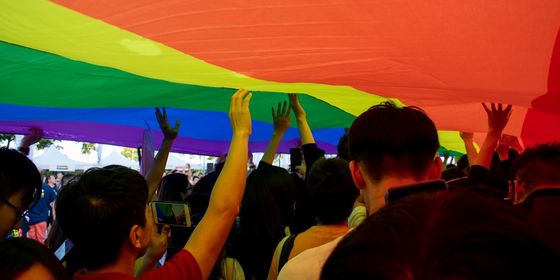Can China’s restroom revolution also be LGBT-friendly?
When Chang, a middle-aged woman, was making her way to the restroom at The Nest, an upscale restaurant on Shanghai’s Bund, she was stopped by the manager—she’d been mistaken, due to her looks, for a man.
An argument ensued. “You people, neither male nor female,” the manager shouted. “I’ve seen plenty like you.” Later, several male attendants allegedly wrestled her to the ground, punching her body, head, and face. Police are now investigating the December incident, amid calls for a boycott of the business by LGBT groups and their supporters.
“A revolution is not a dinner party,” Mao Zedong once said. It is “an insurrection, an act of violence.” China’s “toilet revolution,” a state-backed directive spearheaded by President Xi Jinping to improve China’s public bathroom quality, officially refers to improvements like increasing the use of Western-style flush toilets and improving hygiene standards. However, Xi has also publicly supported a related effort to install so-called “third toilets.”
On third toilets that already exist in public areas and tourist sites around the country, the English translation—“family toilet,” “mother-baby toilet”—and illustration on the signs suggest they are simply unisex facilities, provided for those who may need to assist the opposite gender: parents with young children, for example. Though the toilet revolution, outlined by Xi in last November, was the first official effort to promote unisex restrooms, there have been numerous independent initiatives. In China, there are already genderless restrooms, neutral restrooms, and family restrooms, all essentially offering the same service.
One type, Beijing’s all-gender toilets, is being promoted by Beijing’s Gender Health Education Institute (BGHEI), specifically with the purpose of encouraging gender equality and diversity.
Martin Yang, BGHEI’s sustainable development manager, says that while their and Xi’s campaign differ in some ways, both contribute to providing safe places for all people to use a restroom. Yang points out that the concept of a unisex toilet isn’t necessarily revolutionary: Many rudimentary latrines and bathrooms are essentially communal. “It doesn’t make sense that they have this traditional man-woman sign on their doors,” says Yang. “But we want to say publicly…it’s super gender-friendly.”
“Friendship” and “equality” are two of the “Core Values of Chinese Socialism,” as outlined by the 18th Congress of the Communist Party in 2012. As long as the “third toilet” fits concept within these values, China may sidestep some of the politicized controversies that have hijacked the issue of non-traditional gender identities in the US, while promoting some values of its own: civility and harmony.
Toilet Trans-formation is a story from our issue, “Fast Forward.” To read the entire issue, become a subscriber and receive the full magazine.












